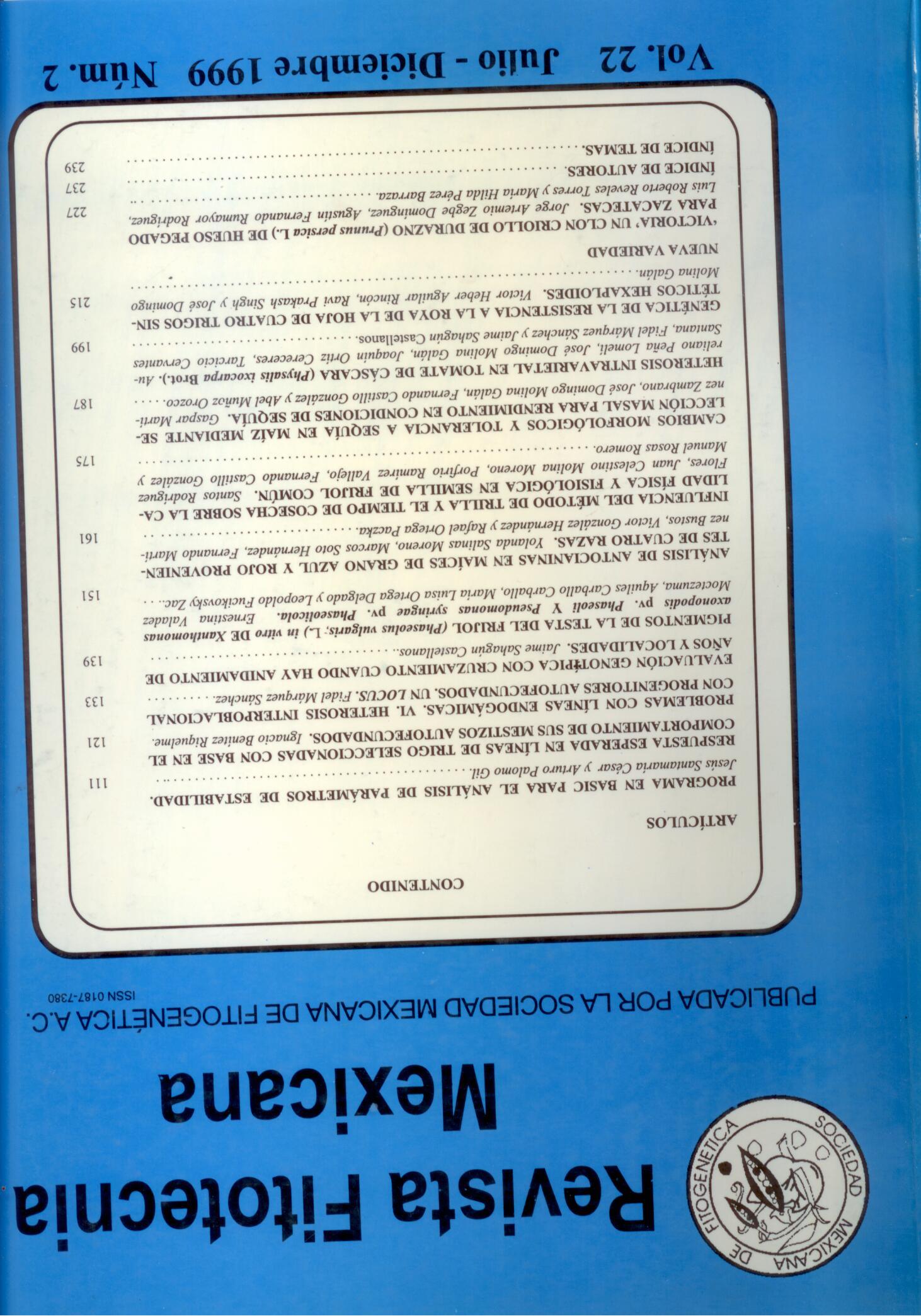MORPHOLOGIC CHANGES AND DROUGHT TOLERANCE IN MAIZE BY MASS SELECTION FOR GRAIN YIELD UNDER DROUGHT CONDITIONS
Main Article Content
Abstract
In order to assess the genetic gains by mass selection for grain yield practiced under drought conditions and its effect on yield components, 13 cycles of mass selection and the original maize variety Zacatecas 58, were evaluated in five irrigated, five droughted, and two rainfed experiments, from 1989 to 1991, at places near to Montecillo, State of México. Mass selection showed to be efficient to enhance yield performance in the three types of evaluation environments, with gains per cycle of selection of 6.6% under irrigation, 15.4% under drought, and 4.6% under rainfall, and indirectly changed the mean of all of the traits considered: grain weight, ear length, ear diameter, rows per ear, grains per rows, days to anthesis, plant and ear height, in the drought environment. Changes on number of ear rows in irrigated and rainfed experiments, and grain weight in rainfed experiments were not significant. Changes on days to anthesis, combining irrigated and droughted experiments, posposed timing of flowering around 15 days, and increased 48.6 cm and 32.8 cm plant and ear height. Drought tolerance measured as the ability to reduce in a lower rate the yield aptitude in drought environment, as compared to the irrigated one, was enhanced from a value of 1.132 units in the original variety, to 0.548 units in the composite of 13th cycle of selection, which means gains of 4.6% per cycle of selection for drought tolerance.

